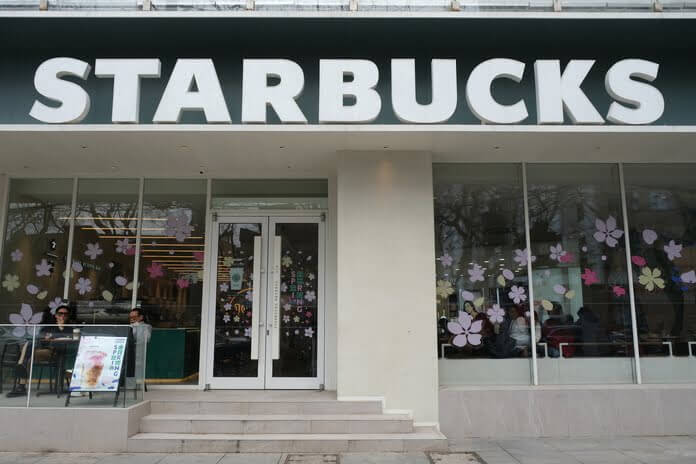Starbucks (NASDAQ:SBUX) has struggled with rising input costs and geopolitical risk. However, I believe the company’s fortunes will soon change and that Starbucks stock is poised for a bullish reversion.
Costs of Pivoting Input
Starbucks’ recent tailwinds are mainly due to rising input costs. The company has recently struggled with rising commodity prices and rising wage demands. To put things in context, the company’s net income fell by 5.5% in the most recent earnings report (year-over-year).
Despite recent cost problems, Starbucks appears to be on the mend. The company’s revenue has resumed its upward trend; however, input costs seem to be reverting.
The price of Robusta and Arabica coffee beans has recently shifted due to supply/demand imbalances. Furthermore, data indicate that the long-term growth rate of coffee bean prices may begin to decline, potentially benefiting Starbucks.
Furthermore, U.S. wages and Starbucks’ SG&A costs have begun to taper, implying that labor market tightness may be easing, which could benefit Starbucks’ income statement.
Starbucks’ Brand Identity and Customer Loyalty
Despite recent headwinds from China-related issues, Starbucks’ third-quarter earnings report revealed a 9% year-over-year increase in U.S.-based same-store sales amid rising demand for cold beverages and snacks. This, in my opinion, indicates that Starbucks has customer loyalty, as there are no clear signs that the company’s consumer base is opting for substitute products.
Furthermore, the company’s organic compound annual growth rates reveal Starbucks’ market dominance. Starbucks controls approximately 36% to 37% of the coffee shop market in the United States and has a global footprint, allowing it to exercise pricing power.
Starbucks sells beverages that you could essentially make at home for the price of a button. Nonetheless, I prefer to buy Starbucks. I believe Starbucks’ brilliant branding strategy is why people will pay a premium for its products, giving the company pricing power.
Starbucks Plan for Growth
Starbucks CEO Howard Schultz recently unveiled the company’s revised growth strategy. Starbucks, according to Schultz, plans to invest aggressively, with a 40% increase in revenue three years from now.
Starbucks plans to open 2000 new stores in the United States, spend $450 million on store maintenance-related CapEx (and upgrades), and operate 9000 stores in China.
The company’s capital expenditure metrics show that it generates enough revenue and cash flow growth to fund an expansion. As a result, I believe Starbucks’ aggressive expansion strategy is feasible and could produce significant results.
At first look, Starbucks’ modest debt-to-equity ratio suggests that it distributes a significant portion of its profits to its owners. Furthermore, the company’s return on total capital of 18.58% says eloquently about the company’s potential to generate residual value for its owners.
On the surface, there are a few issues with Starbucks’ valuation. For example, Starbucks stock is trading at more than three times its sales and roughly 25 times its earnings. However, Starbucks’ price-to-earnings ratio isn’t as concerning as it appears because its PEG ratio of 0.50x indicates the company has strong earnings-per-share growth.
Furthermore, Starbucks’ dividend yield of 2.26% is solid, and its 1.46x dividend coverage ratio suggests it is quite secure. However, there is an inference here. As previously stated, Starbucks is planning a multi-year growth strategy that will most likely force the company to use some of its residual wealth; as a result, the company’s dividend payout ratio of 62.22% may decline in the following years.
Risks
Starbucks’ greatest risk, in my opinion, is its vulnerability to China’s ongoing lockdowns. According to observations, China is unwilling to abandon its Covid-zero policy, and Starbucks’ 44% fall in year-over-year regional same-store sales signals the seriousness of the problem. Furthermore, according to the company’s most recent growth strategy, Starbucks intends to extend its presence in China. Will this provide results? Potentially, but it could go wrong if pandemic-related difficulties do not fade.
Furthermore, Starbucks stock has questionable quantitative risk measures, with its Sharpe Ratio now reading below one. As a result, if the bear market restarts, Starbucks could be one of the worst losers.
Finally, the decreased prices noted before could be due to increased demand. If a severe recession occurs and demand continues to fall, Starbucks’ sales may plummet.
Starbucks Stock Is a Buy
I’m buying the dip. Starbucks’ cost problems appear to be resolving, while its top-line revenue remains strong thanks to its unrivaled brand identification. Furthermore, Starbucks’ stock seems overpriced at first glance. Yet, its earnings-per-share increase negates a bearish argument.
Finally, the company’s projected expansion could offer exponential returns, and I’d prefer to invest before the anticipated operational gains are baked in.
Featured Image- Megapixl @















